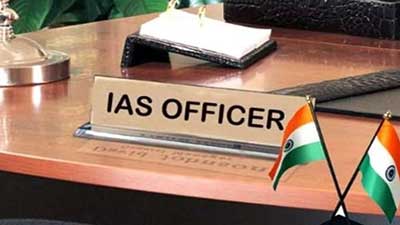Relevance: GS-2: Role of civil services in a democracy.
Key Phrases: PMO, quinquennial cadre reviews, All India Services, Cadre Review Committee, B S Baswan Committee, public sector undertakings, DoPT.
Context
- India has about 22 per cent fewer IAS officers than the sanctioned strength, the Govt has told Parliament.
Background
- Minister of State for PMO; Personnel, Public Grievances and Pensions told Lok Sabha recently that as on January 1, 2021, there were 5,231 IAS officers in the country — 1,515 (22.45 per cent) fewer than the sanctioned strength of 6,746.
- A total 3,787 officers were direct recruits to the IAS, while 1,444 were promotees (State Civil Services/ non-SCS).
- The Department-Related Parliamentary Standing Committee on Public Grievances, Law and Justice in its 112th report tabled in both Houses of Parliament said: There is a huge shortage. The gap between the sanctioned strength and the in-position strength of IAS officers is as large as 104 in UP cadre, 94 in Bihar cadre and 87 in AGMUT cadre.
Note:-
- The Indian Administrative Service (IAS) is the administrative arm of the All India Services of Government of India.
- Considered the premier central civil service of India, the IAS is one of the three arms of the All India Services along with the Indian Police Service and the Indian Forest Service.
- Members of these three services serve the Government of India as well as the individual states. IAS officers may also be deployed to various public sector undertakings and international organizations.
Is the Shortage a New Trend?
- No. As the chart shows, even in 1951, there were 957 officers, including 336 from the Indian Civil Service (ICS), against a sanctioned strength of 1,232 — which means 275, or 22.32 per cent, seats were vacant.
- The shortage has been a constant feature ever since — it was the least in 2001 (0.79 per cent), and the most in 2012 (28.87 per cent), as per available data.
How is the sanctioned strength decided?
- There is a provision for quinquennial cadre reviews for every cadre of the All India Services under the relevant Cadre Rules.
- The Cadre Review Committee (CRC) is headed by the Cabinet Secretary with the Secretary DoPT, Secretary Expenditure, Secretary Administrative Ministry (for services other than the IAS), and the senior most member of the service/cadre in question as its members.
- Cadre review is an ongoing process, and some states are taken up by rotation every year for review — in 2020-21, for example, it was decided to revise the strength and composition of the IAS in UP and Bihar, and of the IPS in Manipur. The sanctioned strength, therefore, keeps changing.
-
The B S Baswan Committee, which was set up “to take a comprehensive look at the requirement of IAS officers over a longer time frame”, said in its report submitted in 2016 that any number above 180 would.
-
Compromise quality;
-
Exceed the LBNSAA’s (Lal Bahadur Shastri National Academy of Administration’s) capacity and;
-
Lead to a distortion in the career pyramid of IAS officers, particularly for senior posts in the Government of India.
-
-
The Committee recommended that “vacant posts in the Centre and states can be filled by deputation where the number of deputationists would be less than the present.”
How are officers recruited in the IAS?
- Direct Recruitment:
- Direct recruits are selected through the Civil Service Examination (CSE) every year; the number of recruits is decided by a committee that takes several factors into account.
- Since 2012, 180 IAS officers have been recruited every year through the CSE.
- Formula Basis:
- A committee has been constituted to arrive at a suitable formula to determine the intake of IAS officers every year from CSE-2022 to 2030.
- Promoted through State Civil Services:
- Some officers are promoted from the State Civil Services (SCS), and a limited number are promoted from among non-SCS officers.
- Filling of vacancies through induction from State Services is a continuous process. The Union Public Service Commission (UPSC) holds Selection Committee meetings with state governments.
- What impact can a shortage of IAS officers have?
- IAS officers are given a wide range of high-level responsibilities. In states, their work relates to the collection of revenue, maintenance of law and order, and supervision of policies of the central and state governments.
- They function as executive magistrates in revenue matters, and as development commissioners. They supervise the spending of public funds and, at a senior level, contribute to policy formulation and decision-making in consultation with Ministers.
- They serve the central government under deputation. State governments have sometimes refused to send IAS/IPS/Indian Forest Service officers to the Centre saying they are short of officers.
- The Centre has recently proposed amendments to the IAS (Cadre) Rules in order to exercise greater control in central deputation of IAS officers as the State Governments have not been sponsoring adequate number of officers for central deputation.
Conclusion
- Bureaucracy deficit is, perhaps, compelling states to take recourse to such means as appointing non-cadre officers to cadre posts, and continuing them in such posts beyond the permissible time limit besides giving multiple charges to serving officers.
- Such measures would compromise the efficiency of administration.
- Hence there is a need to increase the annual intake of IAS officers significantly keeping in view the evolving demands of Indian administration.
Sources: Indian Express
Mains Question
Q. Discuss the impact of civil services on society. What is the reason for the large number of vacancies in the IAS? (Words 250).










